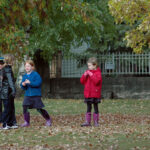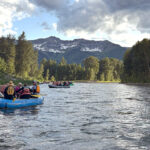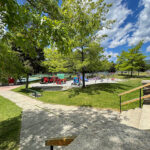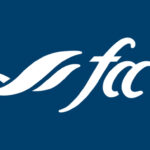Home »

Ecosystem enhancement initiatives benefit Upper Columbia
 $1.15 million for landscape-level enhancement, restoration and conservation projects
$1.15 million for landscape-level enhancement, restoration and conservation projects
Two additional landscape-level projects in the Upper Columbia region will enhance biodiversity and ecosystems in the Basin as part of the Trust’s Ecosystem Enhancement Program—a five-year initiative started in 2017 to maintain and improve ecological health and native biodiversity in the region.
These locally-led initiatives include restoration of a watershed between Spillimacheen and Golden, and enhancement of 112 hectares containing overwinter elk habitat in the upper Kicking Horse Canyon.

“These community-led projects include partnerships and leadership from local First Nations and other groups, supporting improvements to Basin ecosystems and species,” said Johnny Strilaeff, Columbia Basin Trust President and CEO. “Basin residents have outlined environmental enhancement and restoration as priorities for the Trust; these projects will have a meaningful and measurable impact in supporting and strengthening the Upper Columbia sub-region.”
To date, there are 19 projects that are enhancing ecosystems in the Upper Columbia, Elk Valley, Southern Rocky Mountain Trench, Columbia Valley, Kootenay Lake area, North Columbia, Arrow/Slocan, and Lower Columbia sub-regions. The final intake of the program this year will support additional projects from anywhere in the Basin.
Nurturing a Stream to Benefit a Watershed and Community
The many tributaries of the Columbia River support important aquatic, terrestrial and cultural resources for Secwépemc citizens. Kenpésq̓t (also known as the Shuswap Indian Band) is nurturing around 5,000 hectares of this system by restoring aquatic and terrestrial habitat and connectivity on a watershed located between Spillimacheen and Golden.
With the assistance of partners like the Columbia Wetland Stewardship Partners, Lake Windermere Rod and Gun Club, Nature Conservancy Canada and Nature Trust of BC, the five-year Columbia Headwaters Aquatic Restoration Secwépemc Strategy is using a variety of techniques, including planting riparian vegetation, restoring beds and banks, and improving upslope areas so less sediment travels downstream. This will benefit species like bull trout, burbot, western toad and painted turtle.
The project will also incorporate the use and sharing of traditional ecological knowledge from local Indigenous and long-time residents to support restoration and monitoring of the ecosystem.
“The river needs its culture back,” said Mark Thomas, Councillor, Kenpésq̓t. “Historically, the rivers and tributaries to the Upper Columbia River supported important keystone species such as white sturgeon, chinook salmon and westslope cutthroat trout. Restoring both aquatic and terrestrial species to this internationally recognized ecosystem will also restore the health and prosperity of our human communities, continue to foster stewardship for the Indigenous groups that have inhabited this region for millennia, and restore our connectivity to the land and waters for our future generations.”
Improving Overwinter Habitat for Elk
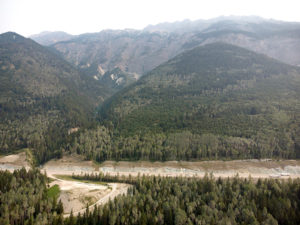
Too much snow and not enough food to graze on: that’s what a five-year project in the upper Kicking Horse Canyon is addressing so Rocky Mountain elk can better use this location in the winter. The Golden District Rod and Gun Club—along with participation from Ktunaxa Nation Council Guardians and ʔakisq̓nuk enterprise Seven Feathers Contracting & Consulting—is enhancing 112 hectares of south-facing slopes near Vacation Creek, between Golden and Yoho National Park. By thinning and pruning immature trees, the remaining trees will grow faster and eventually create an overhead crown that will intercept snow. Reduced tree density will also promote the growth of grasses and shrubs that elk can feed on.
“This project is aimed at increasing the availability of winter range habitat in the upper Kicking Horse Canyon in an area of known importance for elk,” said Brian Gustafson, Executive Director of the Golden District Rod and Gun Club. “This area was previously treated to improve habitats in the 1980’s and we are planning on doing maintenance to the previous work to ensure quality habitat for the elk into the future.”
Columbia Basin Trust supports the ideas and efforts of the people in the Columbia Basin. To learn more about the Trust’s programs and initiatives, and how it helps deliver social, economic and environmental benefits to the Basin, visit ourtrust.org or call 1.800.505.8998.
Columbia Basin Trust operates in the unceded traditional territories of the Ktunaxa, Lheidli T’enneh, Secwepemc, Sinixt and Syilx Nations.
Lead image: Kenpésq̓t (also known as the Shuswap Indian Band) is nurturing around 5,000 hectares of a Columbia River tributary between Spillimacheen and Golden. Supported by the Trust’s Ecosystem Enhancement Program, the five-year Columbia Headwaters Aquatic Restoration Secwépemc Strategy also includes participation from the Columbia Wetland Stewardship Partners, Lake Windermere Rod and Gun Club, Nature Conservancy Canada, Department of Fisheries and Oceans Canada and Nature Trust of BC. Photos submitted by Columbia Basin Trust

